No Paper Tiger
Canon is what you might call a “conservative innovator”. I read a lot of virtual ink spilled over a lack of innovation on Canon’s part with people lamenting all the ways where Canon is falling behind. And truth be told, whenever Canon and one of its competitors releases a camera body at a similar time the Canon is rarely the winner on spec. But where Canon typically excels is in delivering a fully functional product, and, with what innovations it does bring (and they are more than what you might think), they are usually fully realized. My experience is that Canon usually delivers cameras that show better in real world use than they do in a press release. And I can think of no better illustration of this principle than the new Canon EOS 80D APS-C (crop sensor) camera.
I’ll be honest: I was more excited about the new Sony a6300 when it was announced at roughly the same time. I needed a new video rig for one of my many responsibilities (in this case for videoing events for my religious organization). The a6300 specced out as the far more capable video rig in many ways (most notably with both 4K video as well as 120fps 1080P shooting). But the closer I got to the final decision (I had a both kits priced out by a supplier), the more the pendulum began to swing towards the Canon 80D. I liked what I was reading about it, and the allure of the tried and true ergonomics, battery life, and lens ecosystem eventually led me to place the order for the 80D. Was is the right choice? Read on to find out.
If you would prefer to “watch on” instead, you can see my video review of the Canon 80D here:
Build and Ergonomics
I’ve now spent almost two months with the 80D, but it felt familiar within minutes. That’s one of the advantages of staying within the Canon ecosystem. Canon has traditionally done a very good job with camera ergonomics and the 80D is no exception. The one thing that will be missed by some coming from a 7D or the 5D range will be the thumb stick which can be a great asset, particularly when selecting focus points. This has been absent from the xxD range for some time, though, so it’s loss will not be noted by those coming from a 60D or 70D (and certainly not if you are upgrading from a Rebel/xxxD body). The ergonomics are very similar to that of the 70D body, but with a few notable exceptions.
The view from the left side reveals a definite redesign in the connectivity department. There are now three flaps covering ports rather than two, with the remote shutter release moved to its own area near the bottom of the camera. This is to make room for the addition of a 3.5mm headphone jack for monitoring audio next to the microphone input. This is a very welcome addition for anyone serious about doing video work. The HDMI (mini) port and USB ports have reversed position top and bottom compared to the 70D. One other new addition is the NFC symbol that signifies that the 80D now supports the “tap” function of Near Field Communications along with traditional Wi-Fi.
The rear view is essentially identical other than a redesign of the shape of the Q, Playback, and Trash buttons, which are now all circular rather than contoured. I suppose they are slightly easier to feel by touch, but I had scarcely noticed the difference in regular use. The rear wheel continues to be not quite as good/smooth as the one on the full frame bodies, though the circular rocker panel that surrounds the SET button has a much better feel – more definite and less spongy.
The right side looks identical save for two tiny exposed screw heads on the 80D that aren’t there on the 70D.
The top view is similar in many ways but with a few additions. The top LCD screen is now on a slightly raised portion of the top shell, which might make the primary four buttons there (AF, Drive, ISO, and Metering Mode) easier to find by feel. The On/OFF switch is in the same position on the left side, but now the Mode wheel is packed with a few new options, namely two Custom Function positions where the 70D had one and the addition of a Creative Filters option.
Other than a slight redesign of the lens release button the front view is virtually similar.
I found that the 80D felt lighter than the 70D though the difference is tiny (730g vs 755g – the 80D is 1.61 lbs). For that reason it felt slightly more “plasticky” to me, though that’s not really the case. The grip continues to feel pretty much perfect and fits my medium/large hands well. Canon claims that the weather sealing is fairly robust on this line, and I see no reason to doubt it. I’ve never had an issue with the 70D in adverse weather and don’t expect it from the 80D, either. My 70D still looks like new (as you can tell in these pics) after nearly two years of use.
One of the nice advantages of having such a similar design is that a number of accessories for the 70D will continue to work with the 80D, from battery grips to underwater housings and so on. Accessories for new cameras tend to come at a price premium, while existing accessories have seen the typical price drop after having been on the market for a while. If you already have a battery grip for the 70D (or some other accessory), you may be able to avoid some extra costs in upgrading.
Like the 70D the 80D has an extremely useful articulating touchscreen LCD that serves as an ergonomic treat. The screen is bright and responsive to touch, and the articulating screen is incredibly useful. I’ve owned the last three generations of the xxD line, and the articulating screen has been one of their best features. It is incredibly handy for both video and stills use, and I severely miss it when I use a camera without it (which, at the moment, includes all of Canon’s full frame offerings). The touchscreen nature of the LCD makes it incredibly useful for everything from controls to playback to selecting focus points. When combined with Canon’s excellent DPAF (more on that in a moment) using the camera in Live View mode is now a delight when it used to be a nightmare on most of Canon’s bodies.
The 80D ships with a new battery, the LP-E6n. This seems to be Canon’s new battery of choice for new camera releases (including the 7DII and 1DxII). It has [very] slightly more capacity, but the key seems to be its ability to deliver voltage in a different way that allows for slightly better performance (burst rate, for example). The nice thing here is that the camera also continues to be compatible with the older LP-E6 battery packs too, so if you have some of those you can continue to use them (with perhaps a very slight performance hit in a few scenarios). You are also going to want to get the fastest SDXC card you can, as the 80D continues to have a single SD card slot but is pumping a lot more data through the pipeline because of the significantly larger file sizes. You will observe some slowdown in the buffer if you cheap out on the card. Note that the 80D battery life is excellent, and this is one area where the mirrorless competitors (like the a6300) are really lagging behind. Expect to get 1000+ shots on a regular basis on a single battery charge.
One other physical difference is in the viewfinder, which is now pretty fantastic. The 80D’s pentaprism viewfinder has expanded to 100% coverage with a magnification of .95x. That, combined with a wide variety of choices for overlays results in a viewfinder that is a real pleasure to use. It should be noted that during tracking the appropriate focus points will light up, which helps give you direct feedback on the tracking.
Canon’s menus continue to be logical and easy to navigate, and the addition of the touch screen makes that all the easier. The 80D contains considerably more depth in its menus due to having much more capabilities than the previous generation.
A new kit lens debuted with the 80D – the Canon EF-S 18-135 f/3.5-5.6 IS USM. It is an interesting lens, and I spent some time with it and reviewed it here.
There are a number of other upgrades that I’ll try to touch on, but the two major ones are found “under the hood” in a drastically improved focus system and a number of strong improvements in image quality.
New Autofocus System
While Canon is certainly not averse to recycling focus systems (the 70D inherited a slightly tweaked version of the 7D’s AF), the 80D launches with a completely new autofocus system never before seen in a Canon camera. The number of AF points has more than doubled from the 19 points on the 70D to 45 on the 80D, all of which are the more sensitive cross type points. That broad spread of focus points means that portrait photographers will find it easy to compose how they like while still having access to highly sensitive, accurate AF points.
But it is more than just more AF points; the 80D’s AF system has a number of other important upgrades. Let’s take a look at them:
New APS-C Low Light King?
One of the features that Canon is touting about the new 80D is the improved sensitivity of the center focus point. Canon claims sensitivity is now good down to -3 EV (compared to -.5 for the 70D). The EOS 6D had a similar claim when it came to market, and after years of using the camera I can attest to the usefulness of that hyper sensitive center focus point which means that there are few lighting conditions that the camera cannot lock focus in (-3 EV is essentially the equivalent of moonlight).
I did a comparison between the 80D, the 70D, the EOS M3, and the full frame 6D. I used the EF 50mm f/1.8 STM lens for the comparison. The settings for the test were fairly extreme: the camera metered at 1/8th second at ISO 12,800 and f/1.8 (pretty dark). The 70D and M3 both hunted…and hunted, and then returned a red (can’t focus) symbol. This was true of the 70D in either Live View (DPAF or Contrast AF) mode or typical Phase Detect (viewfinder) AF.
The 80D returned a mixed bag. It was able to focus in Live View (DPAF) mode, and focus results were accurate. Using only that sensitive center point, I then tried Phase Detect (Viewfinder) focus. I was surprised to find that the camera only hunted without locking. At this point I wondered if my scenario was not too extreme, so I mounted the 6D.
I know my trusty 6D, and wasn’t really surprised that after focus and then a slight readjustment (about a second to second and a half) it locked focus. I did it again. Both results were accurately focused.
I went back to the 80D to give it another shot, but got the same result. The full frame 6D is still the king of low light focus. Over the course of the review I found this scenario repeated several times. The 80D is undoubtedly better than the previous generation 70D in this regard (by a good margin), but not yet at the full frame standard. Considering that the specs suggest that the 80D should be on par with the 6D I would say that Canon didn’t quite deliver on this promise.
Improved Tracking?
The Canon 80D has made a number of improvements to its tracking system. The AF points now cover more of the frame, making it easy to keep a focus point on your subject. There is a fourth focus mode added to the AF system, and that is a large zone (left/center/right). You can also choose the smaller zones (nine active point grouping), individual focus points, or where the camera selects the focus point with all points active. How does all of this add up in tracking?
Using Phase Detect (viewfinder) AF, I had no issues with tracking a subject (particularly one moving towards the camera). In one sequence of my son running full tilt towards me I took 47 frames (in around 6 seconds according to the time stamp) I didn’t find any photos really missed. I used the new 18-135mm f/3.5-5.6 IS USM at 135mm (216mm) equivalent, and by the end of the sequence only about a third of him fit in the frame. I’ve shot similar segments in testing a number of lenses with excellent results across the board and a wide number of lenses.
I shot a lot of sequences of my dog, primarily with her moving rapidly chasing a ball across the frame. Some sequences were excellent, while in others the results were less consistent. I was encouraged to find that while some sequences started off without anything any focus the AF system acquired the target during the burst and kept her in focus throughout the remainder.
Switching to Contrast AF (Live View) I wanted to test Canon’s claim to enhanced tracking in Live View mode (be sure to switch to AF Servo from One Shot in the Q menu!). I had fairly poor results when using all points + face tracking mode, but selecting the center group and then using the touchscreen to select my son produced better results overall, though I had a section in the middle of the sequence when the tracking strayed to the background and stayed there until he got closer to the camera. It then picked him back up and did a great job tracking over the final third of the 34 shots in that sequence (also in about 7 seconds, which suggests the frame rate drops a bit in this scenario).
I can’t imagine why someone would prefer the Live View tracking mode, but it certainly is an improvement over the 70D. More importantly the AF Servo tracking in viewfinder mode is very effective. This camera is now more attractive to those who want all around camera that is very effective at sports or wildlife, too.
Use with 1.4x Extender (f/8 AF on All Points)
Those of us who own the excellent EF 100-400mm f/4.5-5.6L IS II USM or similar lenses were delighted to hear that not only would the 80D enable autofocus at f/8 on the center point (as a number of other bodies like the 5D MKIII or the 7D MKII had allowed), but would allow f/8 AF on 27 AF points (think the three groups of nine across the middle of the 45 AF points). This is very impressive. How does it pan out in real life?
Mostly good, but some not-so-good thrown in. First of all, if you own the MK II of Canon’s 1.4x extender, know that AF will work at f/8, but only on the center point. You must have the 1.4x III Extender to unlock the full potential of autofocusing at all points. Secondly, my Kenko 1.4x teleconverter that works fine on the Canon 70D (and other bodies) no longer works at all on the 80D. It is now about 4 years old. Some change that Canon has made to the focus algorithm has “bricked” it. Kenko will invariably release a new version that does work (and perhaps a newer release of it already does), but this does highlight the peril of purchasing third party accessories. Kenko might be wise to adopt the USB Dock model that Sigma and then Tamron have employed of “future-proofing” their equipment and allowing for firmware updates when Canon does something like this.
How about the autofocus itself? That really depends on what focus mode you select. Using a single AF point (particularly the center one) results in quite good results. The focus with the 100-400L II even at 400mm (560mm with the 1.4x) produced fast, accurate results. Here’s a shot of the moon and a crop at 560mm (896mm FF equivalent).
Individually selecting other points worked quite well, too, if not with the absolute certainty of the center point. Results are less promising in other modes, though. Selecting a zone of focus points does work, though autofocus speed is definitely slowed a bit and there is a greater tendency for the AF to “pulse” a bit before settling on focus. I also found in some settings that the focus button needed to be depressed more than once before the AF would “wake up” and do what you wanted.
It should be noted that the mode that allows you to select either the whole left group, center group, or right group (large zone) is not available. You can select the left group of nine, center group of nine, right group of nine, individual points in those groups, or all AF points (the 27 available). The latter choice produces the least desirable results, in my opinion, with the most hunting and poor behavior, though in some settings it seemed to work fine. The bad news is that doing sophisticated AF work (like bird in flight tracking) may produce more frustrations than you desire. Less demanding situations should prove quite acceptable, though.
It’s nice to have as an option, of course, and there are many situations where it is useful, but my recommendation continues to be that the best use of lenses is within their native focal lengths. The image quality remains very good (at least with the 100-400L II), and one nice bonus is that the lens with the extender becomes almost a macro lens…save with the biggest working distance, ever. Check out the image of the screw and nut, here, and that is not even quite maximum magnification.
There are a number of ways where the AF system is notably improved over that of the 70D, and for typical use I’ve been really delighted with its performance. In time I’m sure that I’ll better maximize its potential, but suffice it say that there is much more depth in the AF system to be explored and further pads the credentials of the 80D as one of the most versatile cameras, well, ever. It seems that Canon has done a good job delivering on the potential of the new upgrades. While not perfect, there are some notable improvements across the board.
DPAF Tracking
The 70D has been on the top cameras used by YouTubers in large part because of Canon’s DPAF (Dual Pixel Autofocus) technology that pioneered with it. DPAF revolutionized the versatility of Live View (Contrast AF) autofocus, with vastly improved focus speed and also highly functional video servo autofocus (the camera continues to focus during video acquisition.) One of the key upgrades to the 80D’s DPAF functionality is that now the camera’s tracking ability in DPAF mode (stills or video) is radically improved. I ran a series of tests to examine the improvements of tracking in video mode.
If you will watch this video, you can see the clear advantage that the 80D has over the 70D in this regard.
The bottom line is that the 80D is now my go to video camera for my own YouTube channel. I can shoot videos at wide apertures and the face tracking is perfect…and I mean perfect. The focus on my face as I move about (I’m fairly animated as a presenter) remains impeccable and my job is much, much easier as a result. If you are a YouTuber, the 80D might well be the best choice for you. While the 80D doesn’t have as many video modes as some of the other competitors (no 4K), the video quality and color rendition is exceptional. In head to head comparisons the Canon 80D video looks more natural and less “pumped up” than, say, the a6300.
Sensor Improvements
The 80D has received a new 24.2MP sensor that has a nice resolution bump over the 70D’s 20.2MP sensor. This is to me a bit of a sweet spot for sensors, allowing for more pixels to be packed on the subject but with the ability to further improve some important things like dynamic ranges and high ISO performance. The 80D now uses Canon’s Digic 6 processor rather than the Digic 5+, though unlike the 7DMKII it has only one processor rather than two.
I’ll break down the major improvements in a moment, but there are a few other niceties that are a part of the package. The shutter lag is improved to 60ms from 65ms (70D), meaning that the camera is more responsive. While the frame rate remains similar at 7FPS, the camera is moving much more information (nearly 20%) due to the higher MP count. Canon has managed to improve the buffer, too, from 65 JPEGS (70D) to 110 JPEGs before the buffer fills, or 25 RAW images rather than the 16 RAW images from the 70D. These are significant improvements that will make the camera more attractive to sports/wildlife/event shooters.
Another key improvement that we saw with the 7DMKII was the flicker detection and timing to help when shooting under lights that cycle (sodium lights are notorious for this). I’ve seen a lot of unevenness from this phenomenon in my event shooting in the past. The 80D adopts this technology, and, when engaged, will help avoid the flicker and will give you more even results. This is going to be a big deal to some shooters.
The 80D also adds a new AWB mode which will aim to produce a white priority balance even under tungsten lights (no warm/yellow look). You may want to remember to toggle in and out of this if you want a warmer look to your images, but for those that want a consistent white balance in changing lighting it works quite well. Another advantage for event/sports/wedding photographers.
Another great feature is the built in intervalometer that allows for time lapses to be shot in camera without any other accessory. One more tool in the arsenal.
The biggest improvements come to the image quality itself, though, which is improved in every measurable metric.
Great Looking Images
The 80D produces some of the finest images of any APS-C camera, which great detail, accurate color rendition, and excellent dynamic range. The larger megapixel count results in images that are noticeably more detailed, and the larger images also give you more latitude for cropping (which, frankly may be a better option than using a teleconverter in some situations).
Dynamic Range
The early buzz around the 80D is a significant improvement to its dynamic range at base ISO. Expanded dynamic range allows you more leverage in balancing the exposure when you have both bright areas and shadow areas in the same shot. My experience in the past says that Canon has had better success with this in the shadow recovery area than it has with highlight recovery.
I used Canon’s EF-S 24mm f/2.8 STM lens for the three APS-C cameras I have on hand: the Canon 80D, 70D, and the EOS M3. The 70D has a smaller 20MP sensor, but the EOS M3 has a similarly sized 24.2MP sensor. I shot the same scene in rapid succession, using bracket exposures ranging from -3EV to +3EV. My goal was then to bring up the shadows in the underexposed images and see what shadow recovery was like. My recommendation is to watch this video that will allow you to interactively see just what I’m talking about here.
The 80D is definitely the top camera here for shadow recovery. I took the 3 stop underexposed image and brought it up two stops then used Lightroom’s shadow recovery slider at 100% along with the highlight recovery at -100%. I then tweaked the whites and blacks a bit to see if I could produce a credible image. The end result gave me a lot of confidence. The shadows are still nice and inky without any hint of noise. The weathered boards along the front of the old barn show nice detail and no color noise. You can see both the original underexposed image along with what playing with the sliders produced in the gallery below.
The image from the 70D is noticeably inferior. I used the exact same values but with a very different end result. The shadows are full of noise, and there is color noise on the various textures that simply isn’t there with the 80D. The same weathered boards along the front are discolored with a lot of green color noise. The fine details are noticeably better with the 80D’s image. Here is a look at the two:
The EOS M3 has a similarly sized sensor, but it is clear that the 80D is packing some improvements. The EOS M3 will only autobracket 2 stops, but the light was falling somewhat so the histogram is still about equal at two stops. I did manually shoot a frame with the same settings as the other two cameras, but it was a bit more underexposed. I used slightly less extreme recovery figures to get a similar look, but even so I could see the superiority of the 80D’s sensor. The noise levels are a bit less extreme in the shadow area, but still clearly behind those of the 80D. Likewise there is more discoloration in the boards on front of the barn.
I wasn’t particularly impressed with my results to recover any of the three stop overexposed images. Blown out highlights at that extreme just aren’t coming back. I could create credible images save the skies, but didn’t notice a big difference between any of the cameras.
My recommendation: if you want to get a balanced exposure out of one frame, slightly underexpose (a stop or even two) and you will have a nice sky along with the ability to cleanly recover shadow information with the 80D.
High ISO Findings
Canon has been steadily improving the performance of its cameras at high ISO settings, and that is apparent here. Don’t expect anything earth shattering, but there is clearly an improvement over the 70D though still not at the level of the full frame 6D (which has been the Canon king for a while when it comes to clean images at higher ISOs). The 6D lacks in some areas (AF!!), but its sensor is top notch.
When comparing the images from the 70D, M3, and 80D, the latter wins for having the finest grain and the least amount of color banding. Most importantly is that you can push up into ISO 6400 territory, for example, and get quite good results. Here is a comparison between the 70D and the 80D at ISO 12,800. (80D on left)
The 80D clearly has the cleaner image, with less color banding and a finer grain/noise pattern. This image also reveals another tip: Adobe has revised the color profile for the 80D to a more neutral look that lacks the typical stronger red saturation of Canon bodies that you are familiar with. It is more accurate, but if you are very accustomed to (and like) the usual Canon color, you may find the color output a bit flat. You may want to make a custom profile in the camera that boosts the red saturation a bit to give you the look you are accustomed to.
I shot an event at a school all at ISO 1000 with very clean results. I used the new Sigma 50-100mm f/1.8 ART lens (review here) and was happy with how everything turned out. Here’s a few of samples:
Finally, in the interest of meeting the internet requirement of a cat picture in every lens/camera review, here’s a cat at ISO 5000. I shot this with the 18-135mm USM lens (not the world’s sharpest), but there is still a nice amount of detail and a clean look overall.
All in all the 80D has made great strides all around in the image quality department and sports what I believe to be the current standard for APS-C cameras.
Video
Many of the improvements to the 80D are video centric, which makes it more surprising that Canon elected to not include 4K video support. That, in my mind, would have make the camera an instant home run and helped bring the doubters into the fold. But no, the camera lacks 4K support, and also continues to not offer clean HDMI out. So, in an absolute sense, the 80D is still not a “pro” video camera, but it is a great video camera for those looking to vlog, run a YouTube channel, or just capture great looking video (with all of the enhancements of the 80D’s improved sensor!)
One of the 80D’s great advantages is the built in ergonomics of the camera. The Sony a6300, for example doesn’t have the touchscreen, so selecting the focus point is much more clunky. With the 80D you can simply touch where you want the camera to focus, and it will produce a nice focus pull. I found that shooting in 1080/60p mode (the 70D topped out at 30fps at 1080p) allowed me even more control over those focus throws and produced really smooth transitions. That 1080/60p is obviously a vast improvement for when you record action as well. I shot this whole segment with the 80D and was really pleased with the result.
The 70D was a good video performer, but one weak area was in its moire suppression (which it didn’t suppress very well at all!). The 80D is significantly better, and in this brief video I demonstrate the difference between the two.
Canon offers a new HDR video mode on the 80D, where the camera will try to reduce highlight clipping in high contrast situations. The new time lapse functionality can also be accessed in video mode to produce time lapse movies in camera.
The aforementioned headphone jack is an important addition here, and even the microphone jack has been re-positioned to a more logical point on the camera body.
There are a few optional accessories that Canon has pioneered with the 80D to further its credentials as a video rig. The first is a directional stereo microphone, the DM-E1. There are obviously a number of third party alternatives, and I haven’t spotted any specific thing to point to as a selling point over alternatives from Rode, for example, but it is still nice to see Canon attempting to fill this void. I’ve owned the DM-100 from Canon for camcorders for years, and it has always performed well for me.
More interesting, however, is the new powerzoom accessory – the PZ-E1. This attaches the lens and enables silent electronic zoom control both physically and remotely via the Canon app (this is the most interesting aspect of it!). The power zoom also gives you options for setting the zoom speed, enabling much greater flexibility for video capture and making the lens operate very similarly to a camcorder lens. Right now the only lens that is compatible is the new EF-S 18-135mm IS USM lens that debuted with the 80D as a new kit lens. I reviewed that lens here. It will be interesting to see which lenses in the future are also designed for use with this accessory. While it may be a niche item that doesn’t appeal to everyone, it does certainly give some additional (potential) functionality for owners of the lens.
One other primary shortcoming is that the 80D continues to have the 29:59 minute limit, after which the camera will automatically stop recording and will need to be manually restarted. This is similar to all other DSLRs and is basically the result of a quirky EU law that imposes additional duties/tariffs on video cameras. That limit is imposed to bypass those tariffs. On the plus side video recording will continue to that point without being interrupted at the 4 GB mark like previous generations.
While the Canon 80D doesn’t have the absolute video specs of a few competitors, I feel like the 80D’s video features are well implemented. The footage itself looks great, very clean and with accurate color. I’m very happy with it as a video rig. Since acquiring it the 80D has been my go-to rig for my YouTube channel, and I’m getting a lot of feedback about the clean, sharp results I’m getting right out of camera (I find that using the Landscape color profile produces enough saturation and sharpness for me to forego color grading, at least for my purposes.)
Conclusions
While there were a number of people that looked at the announcement of the 80D and said, “yawn”, I have yet to hear from anyone who has used the camera who didn’t love it. It is more camera in the field than it is on paper, and the key word that I and others are using of it is versatility. It just seems to be pretty much good at everything. It handles well, has great image quality, and is generally a joy to shoot with. The upgraded AF system makes it a viable competitor to the 7DII, though that camera should probably still be the ultimate choice for sports or wildlife shooters. But the Canon EOS 80D is the jack of all trades, good enough at everything to make many owners very happy. It lacks some of the advanced video features of the competitors, but implements the video features it does have very well and produces footage better than its specs might suggest. Canon’s DPAF technology is maturing nicely, and the tracking performance in video is excellent. There are few reasons to not recommend the 80D to anyone looking for an all-round excellent camera. I would be delighted if the 6DMKII was essentially this camera with a full frame sensor…now that would be fun!
Pros:
- Extremely versatile camera that is pretty good at everything
- Improved 24.2MP sensor with great image quality and exceptionally good dynamic range
- Improved AF system with 45 cross-type AF points
- Up to 27 AF points available at max f/8 aperture
- Improved tracking in both viewfinder AF and Live View DPAF
- Highly sensitive center point in low light conditions (Canon claims to -3 EV)
- 100% viewfinder coverage
- Flicker detection and white priority AWB helps sports and event shooters
- Headphone jack, more video modes, and better moire performance
- Faster shutter and bigger max buffer improves action performance
- More connectivity (addition of NFC)
- Articulating touchscreen is a treat to use
- Fantastic ergonomics make for a great shooting experience
- Ability to use 70D accessories, battery grip, and older LP-E6 batteries
Cons:
- Lacks the advanced video specs of the competition
- Some new features (f/8 focus with teleconverter, -3 EV focus) don’t work as well as expected
- No 4K video
- Single SD card slot
- High ISO performance didn’t jump as much as the dynamic range
- Can take more time for the buffer to clear than what you expect (faster cards improve performance)
Gear Used:
Canon EOS 80D
EF-S 24mm f/2.8 STM Lens
Canon EF-S 18-135mm f/3.5-5.6 IS USM Lens
EF 50mm f/1.8 STM Lens
Sigma 50-100mm f/1.8 DC HSM ART
Adobe Lightroom CC Software for Mac and Windows (Boxed Version)
Adobe Photoshop Creative Cloud 1-Year Subscription
Alien Skin Exposure X (Use Code “dustinabbott” to get 10% anything and everything)
Purchasing your gear through B&H and these links helps fund this website and keeps the articles coming. Thank you for your support.
Great News! I can now offer a 5% discount on all purchases at Amplis Foto, Canada’s Leading Photographic Supplier. Please enter discount code: AMPLIS52016DA in your cart. It is good for everything in your cart, and is stackable with other coupons, too! It will take 5% off your entire order! Proceeds go towards keeping this site going and providing you with new reviews!
Check me out on:
Google+: | Facebook: | Twitter: | Flickr: | 500px: | Sign Up for My Newsletter :


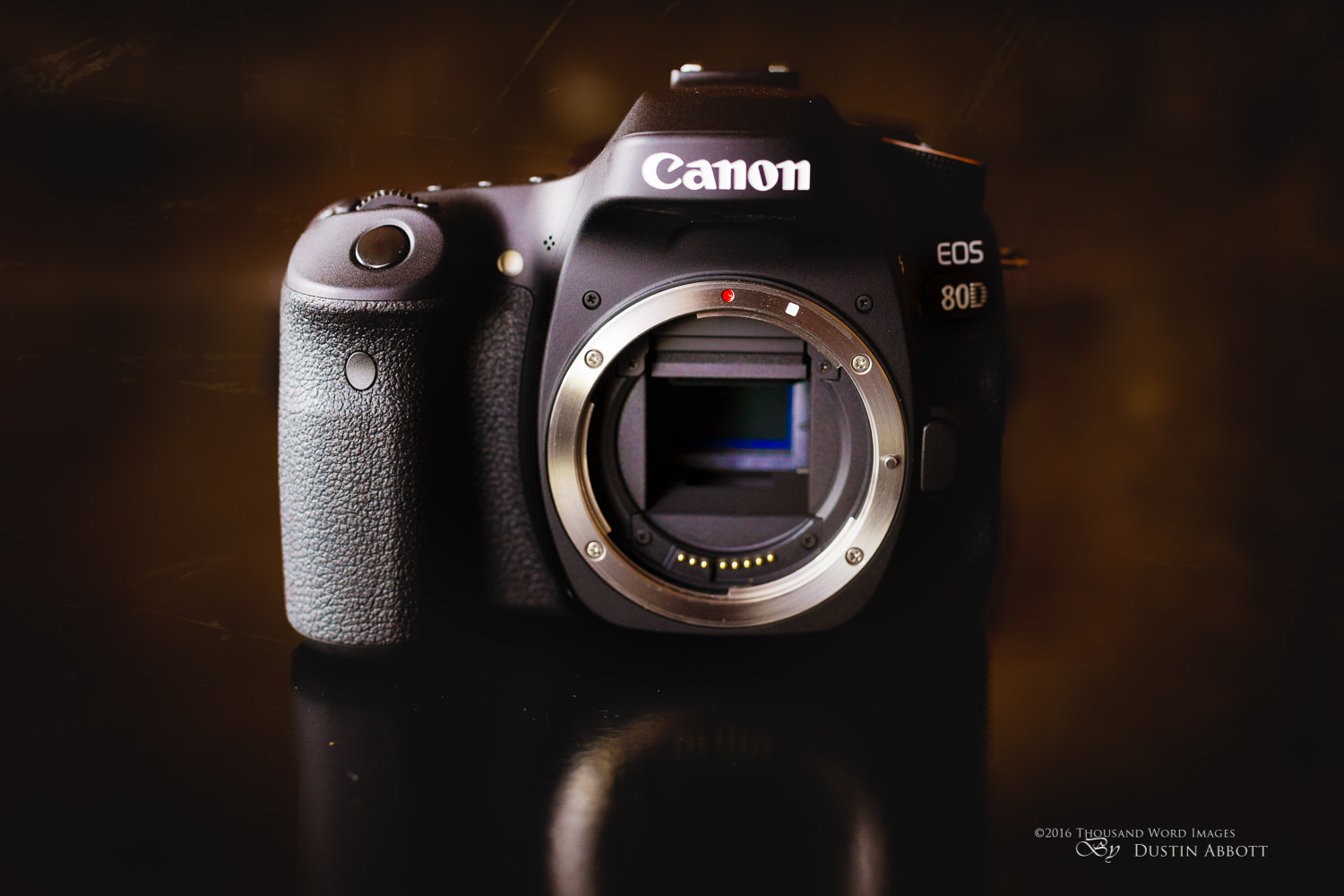
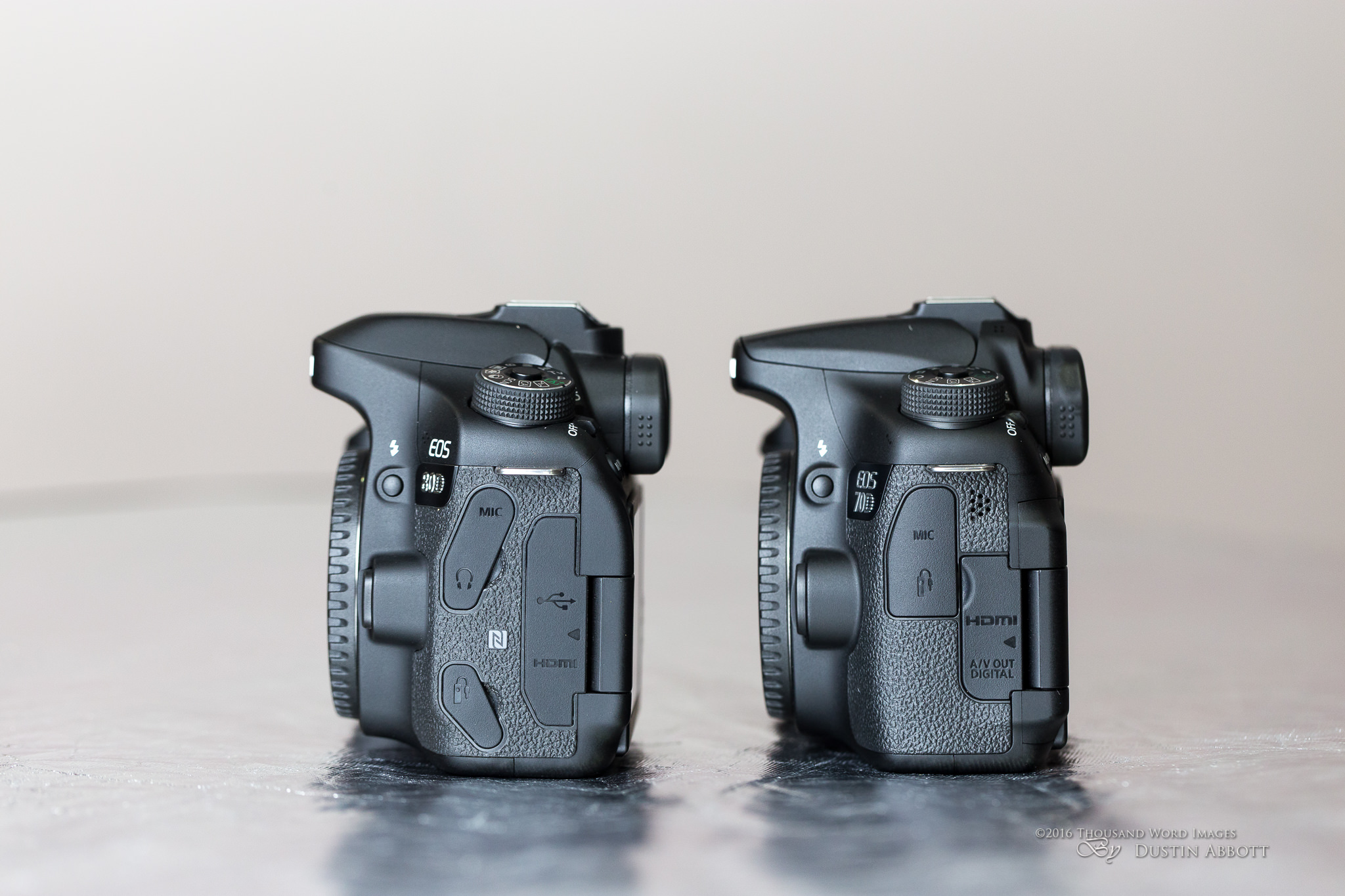
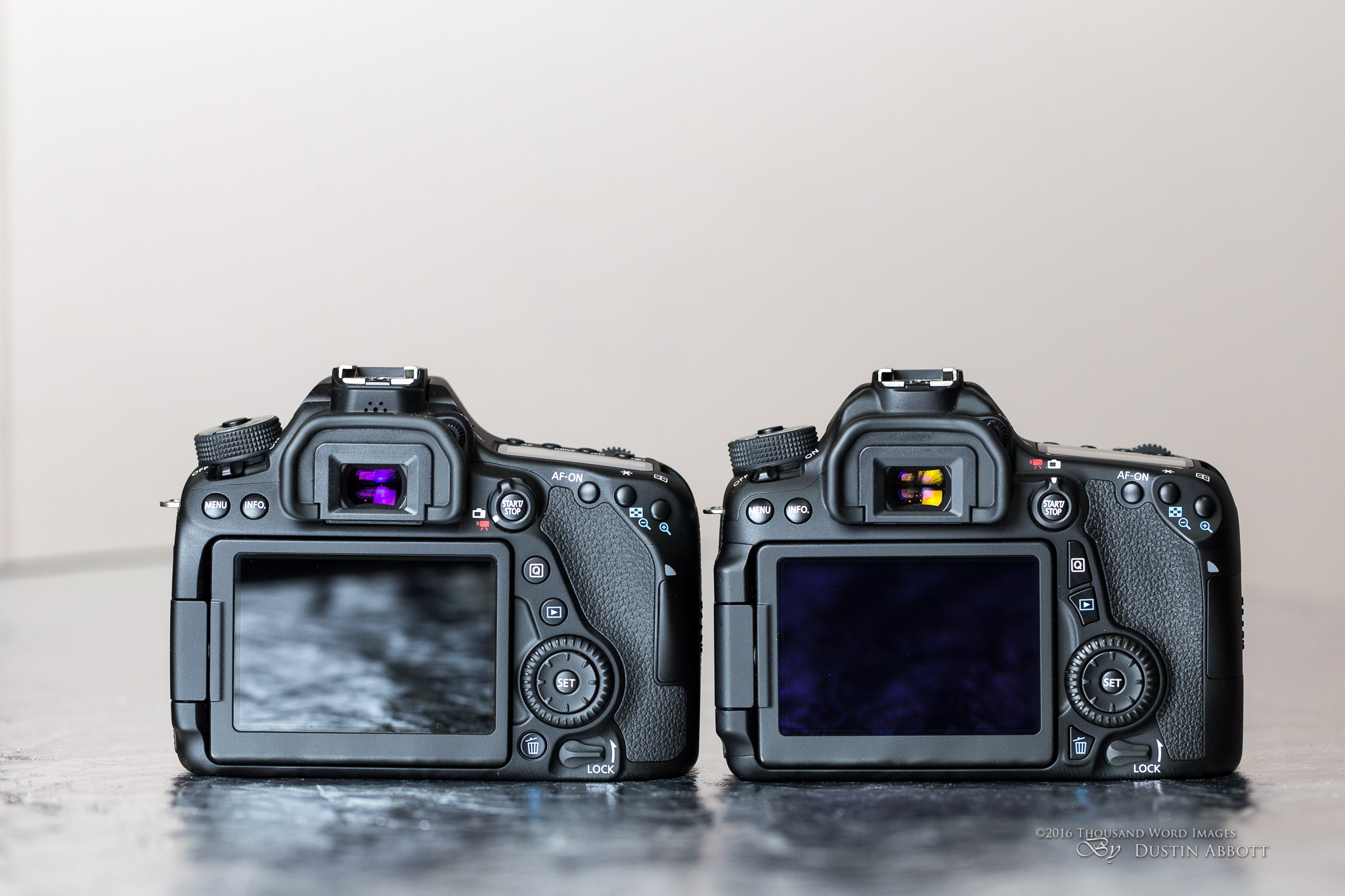
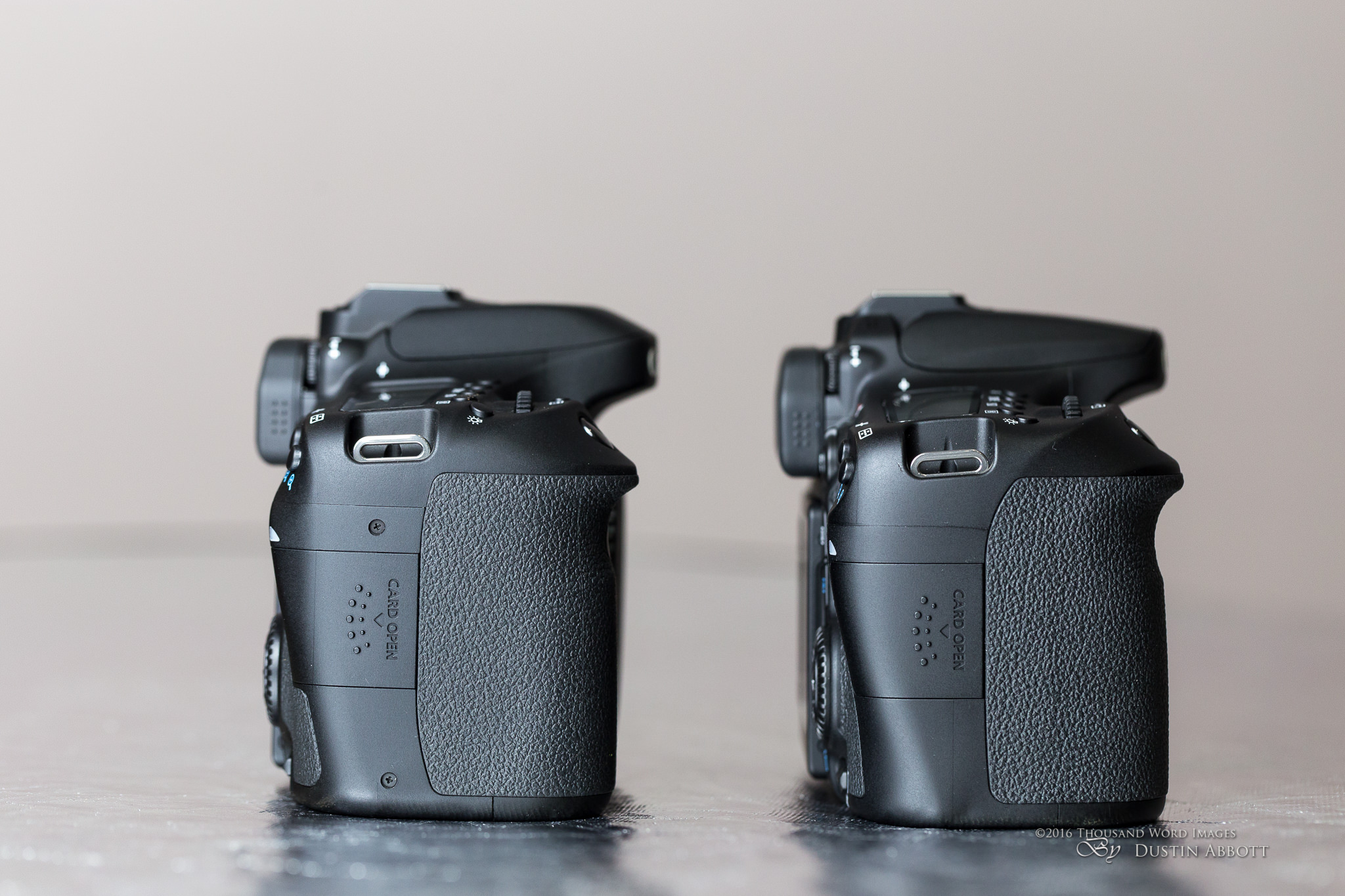
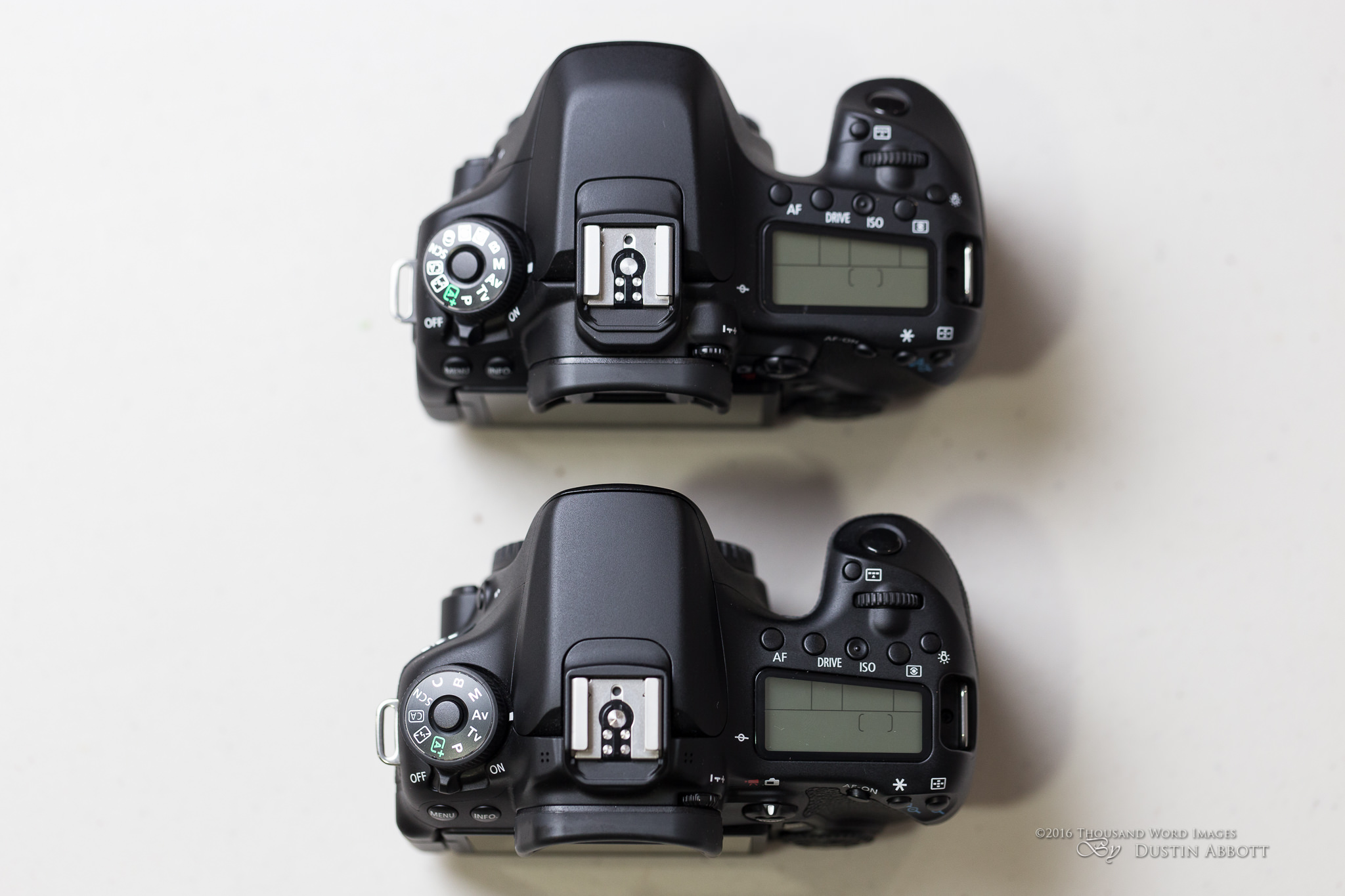

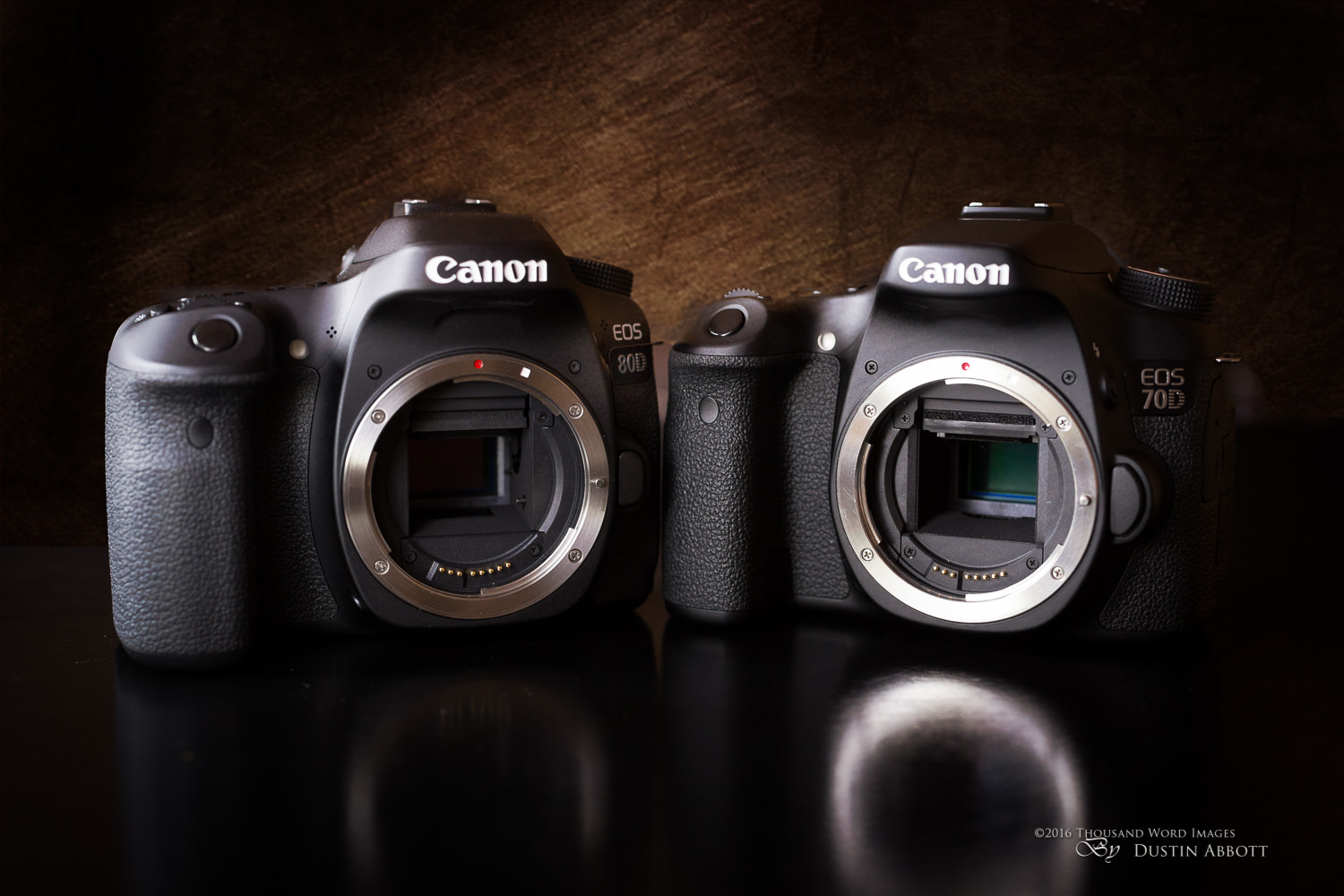

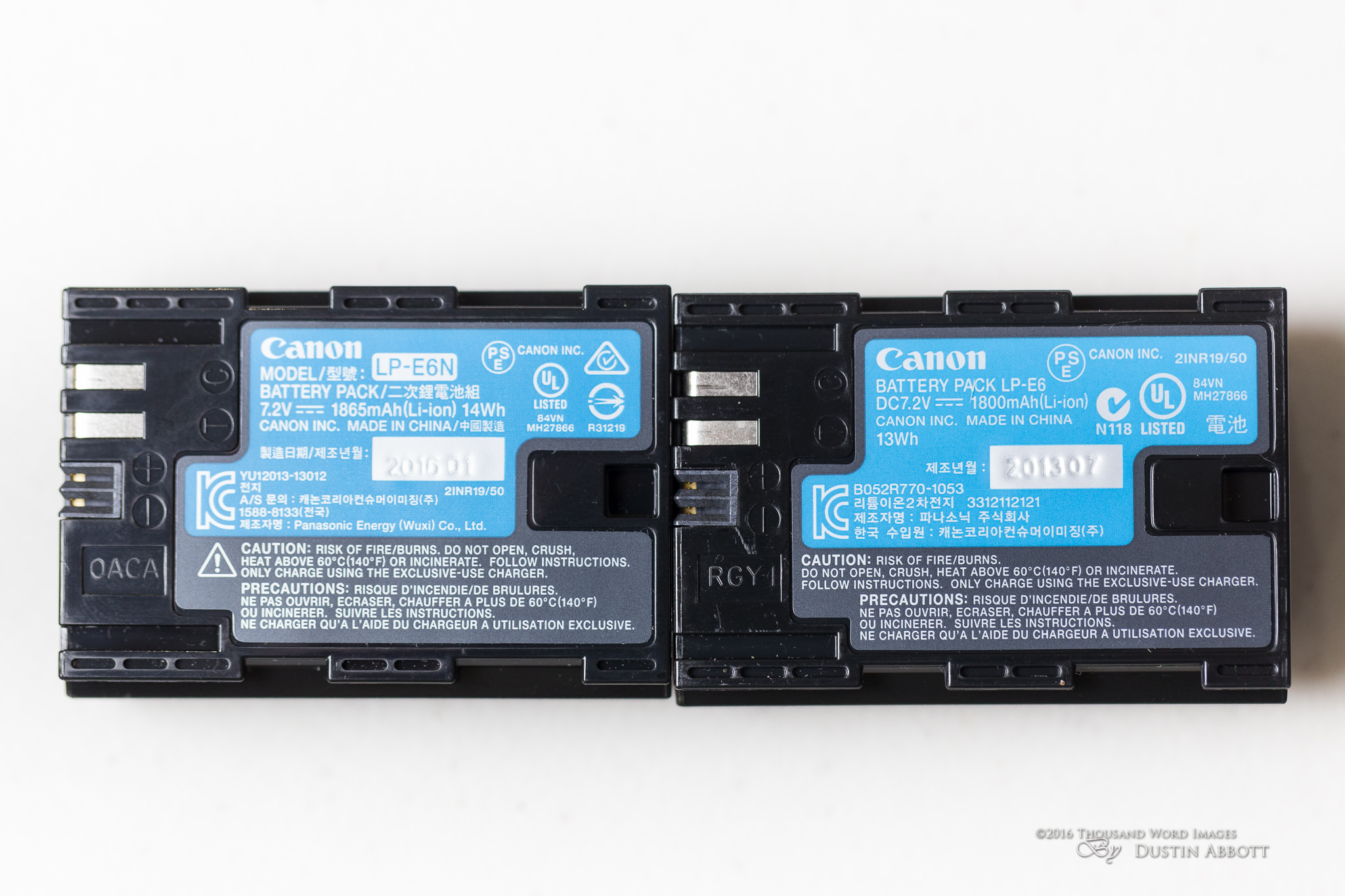
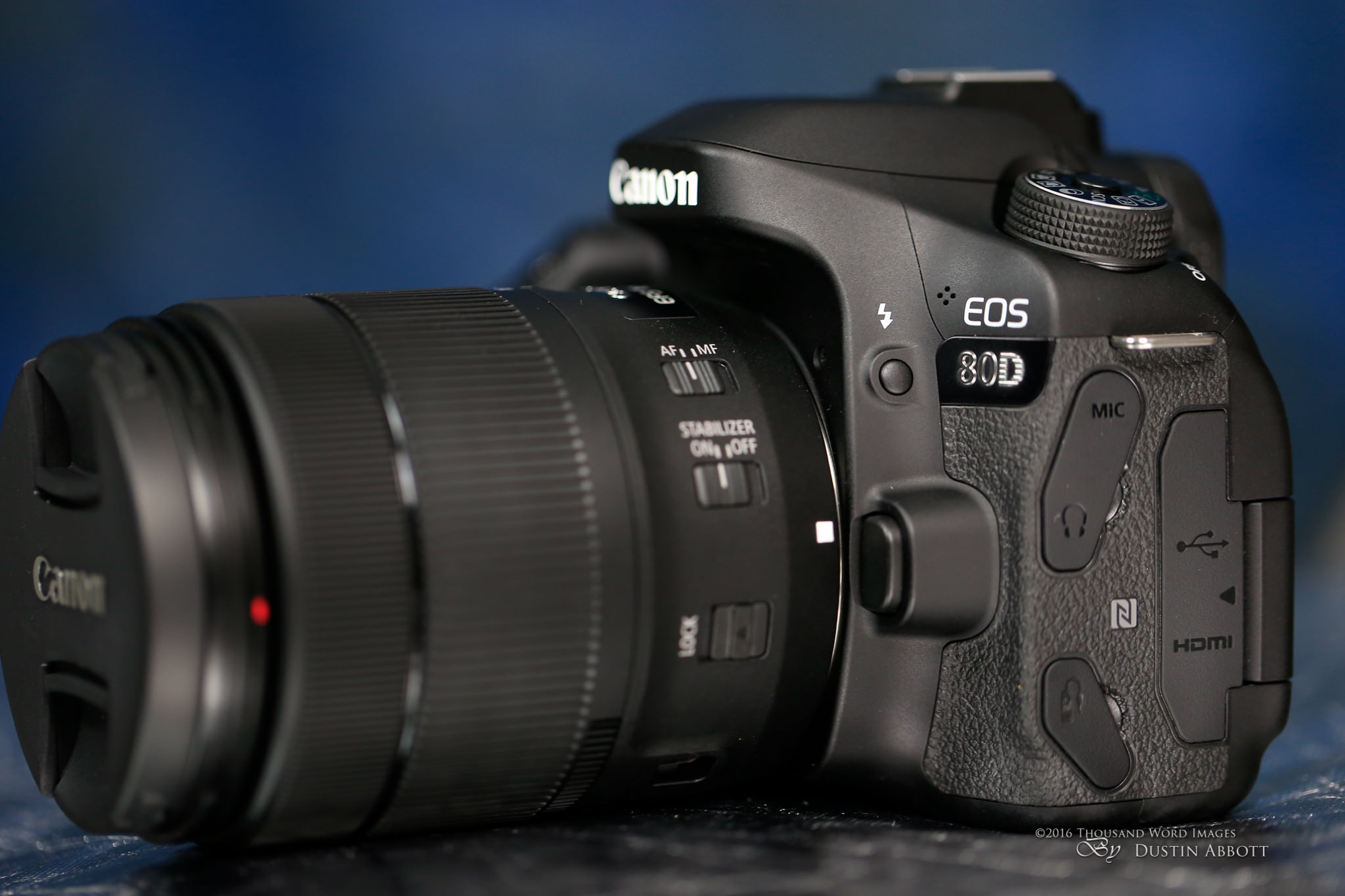
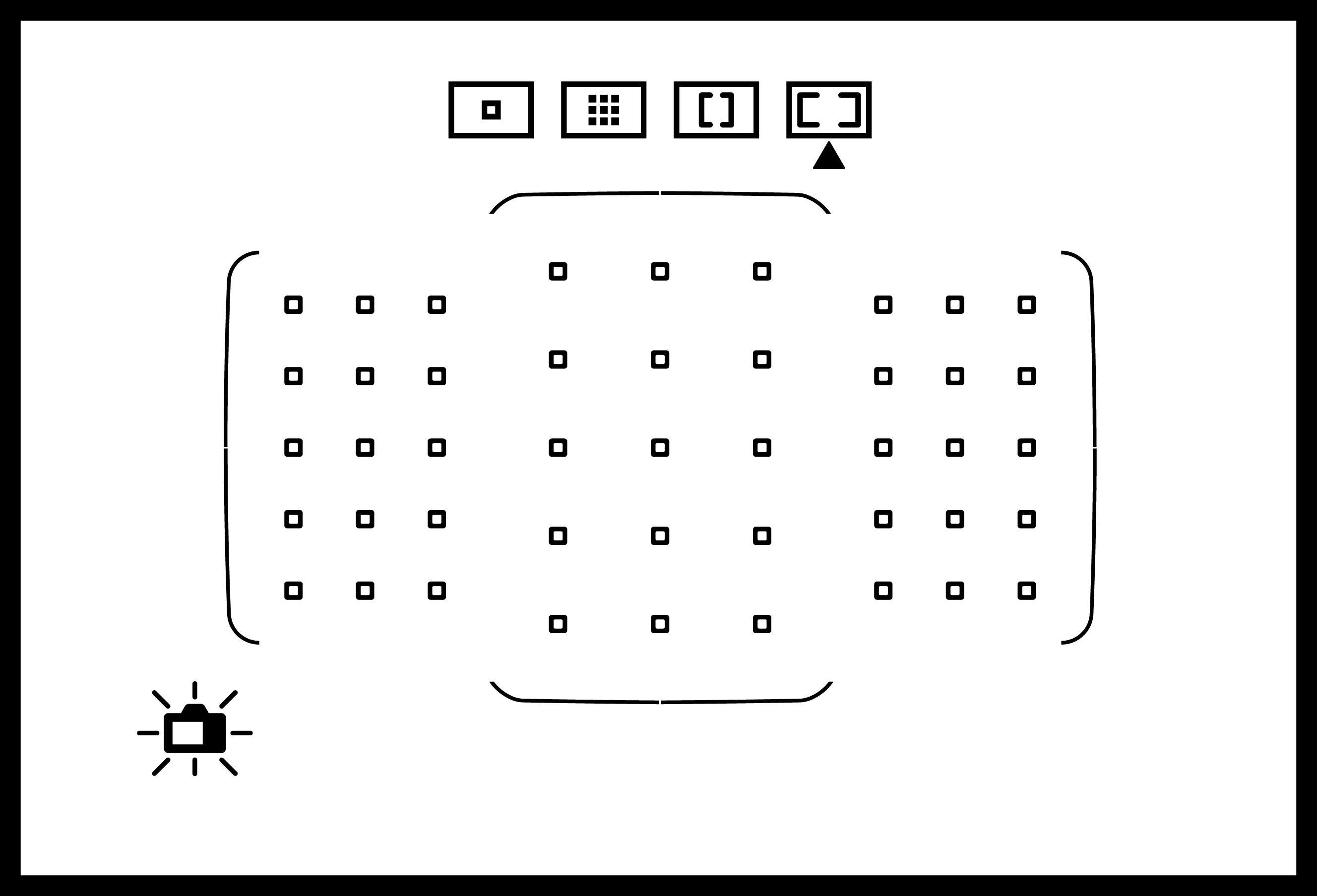
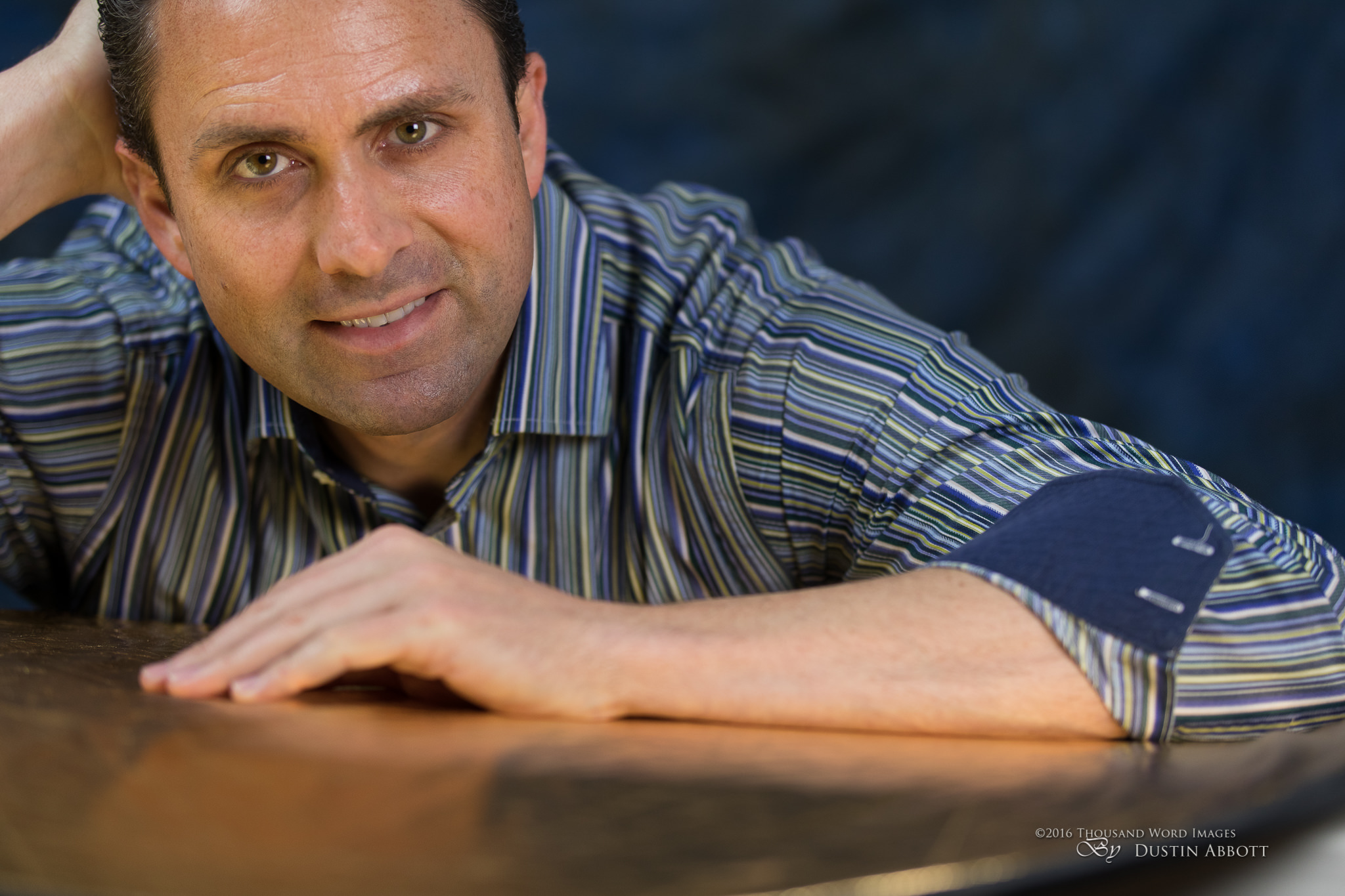
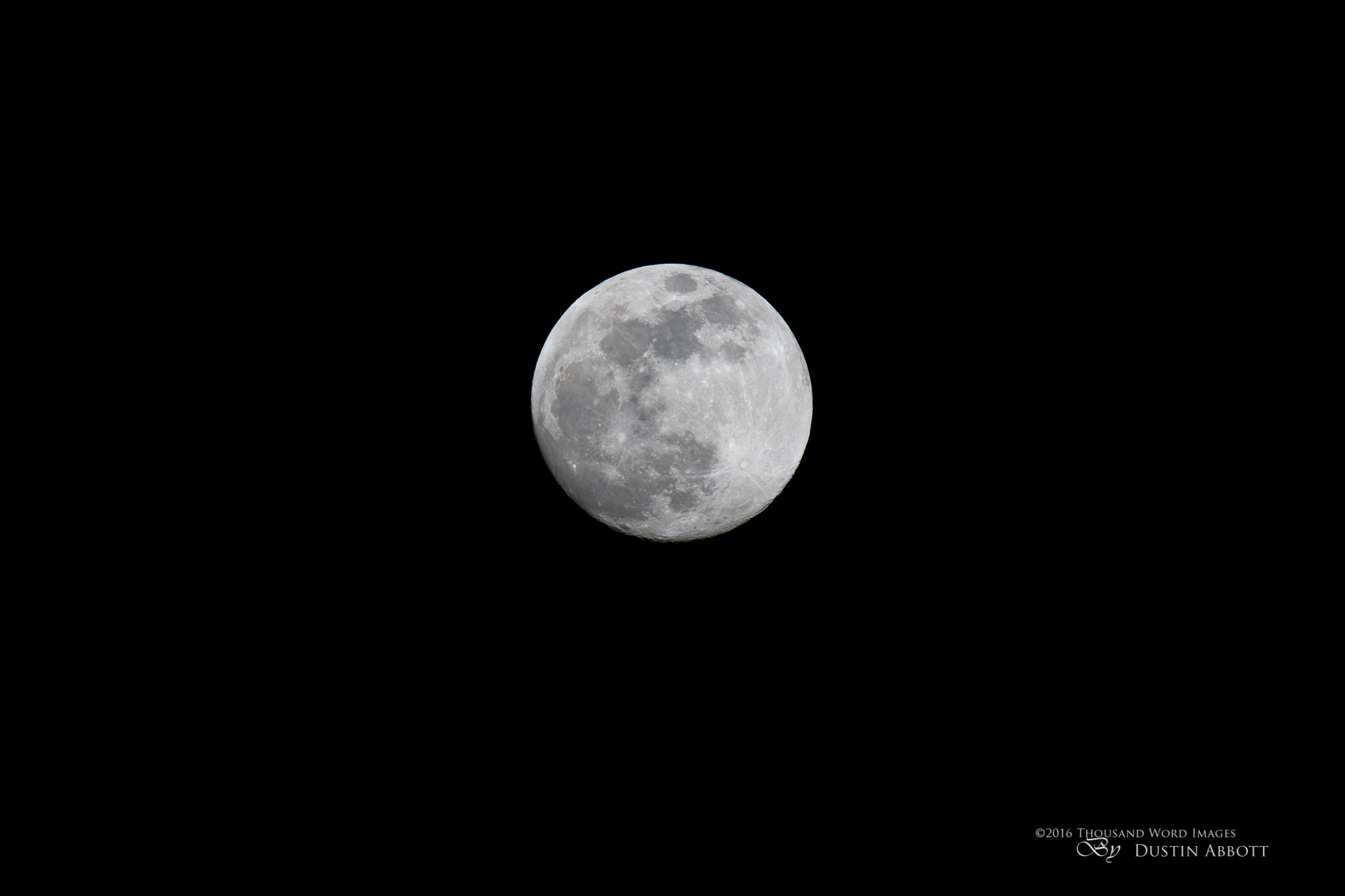
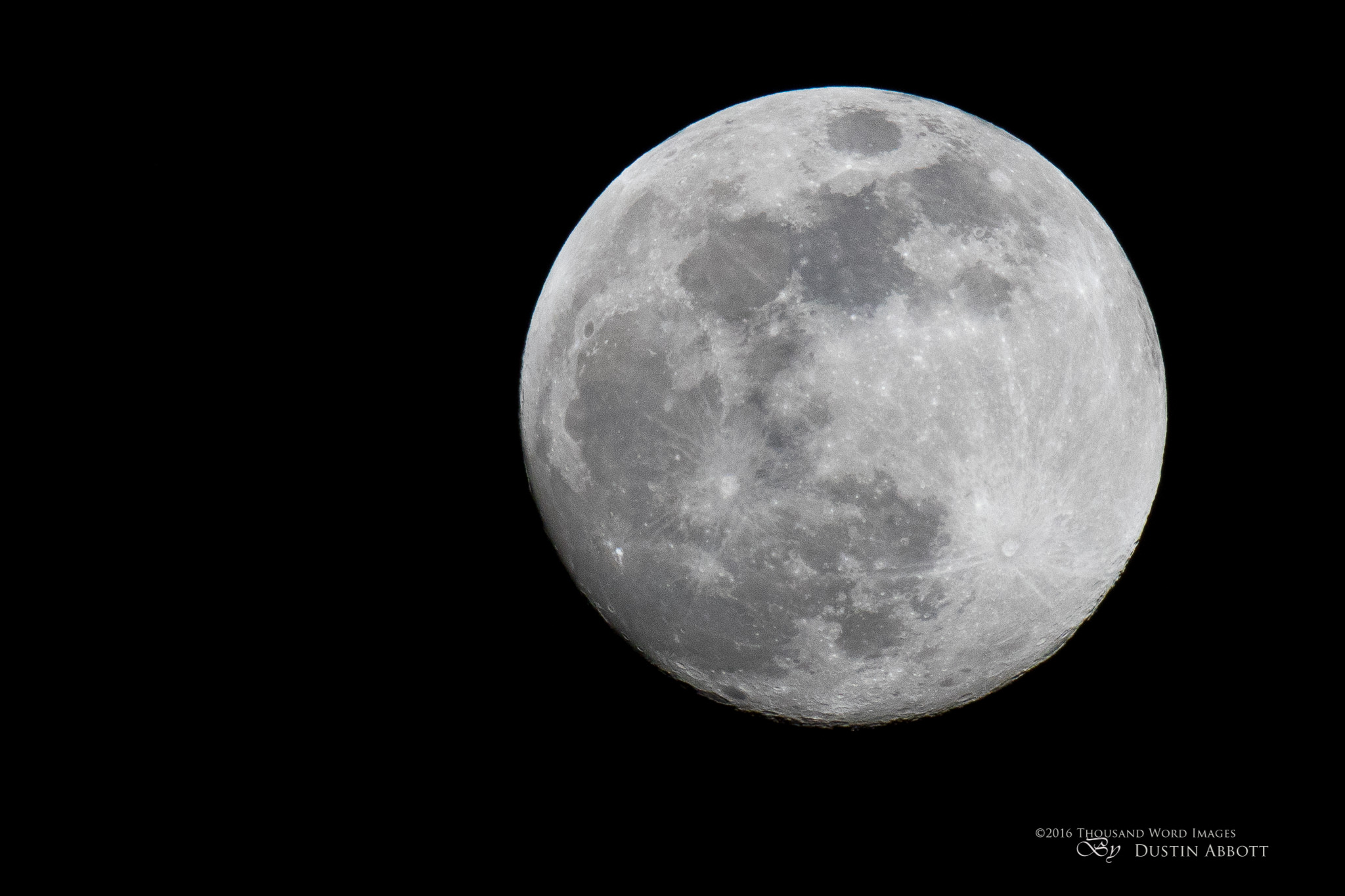
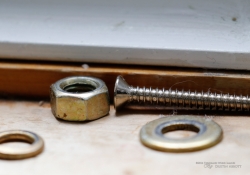
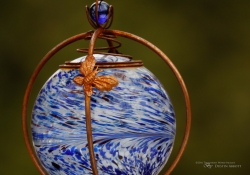


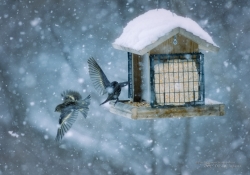

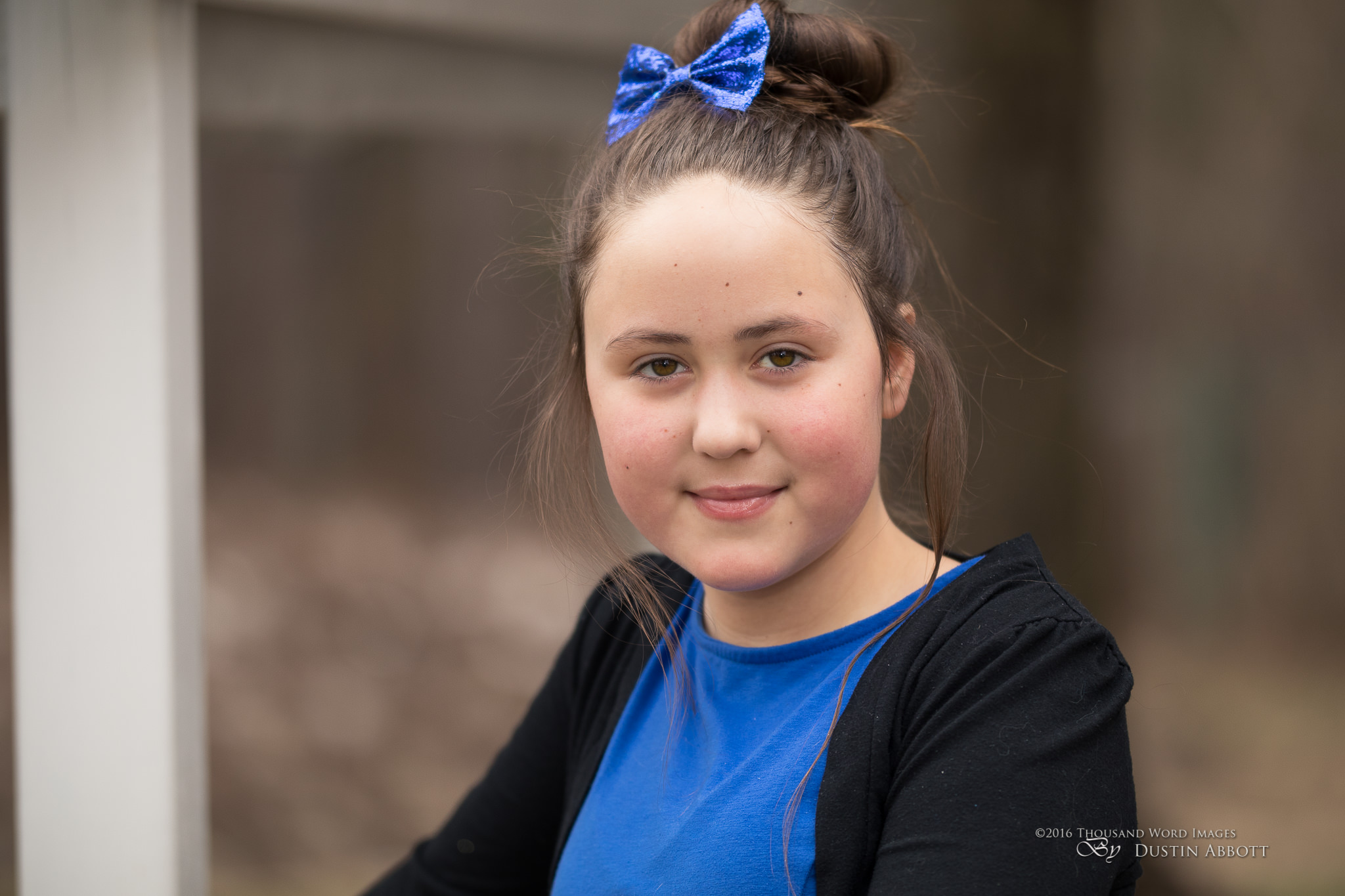
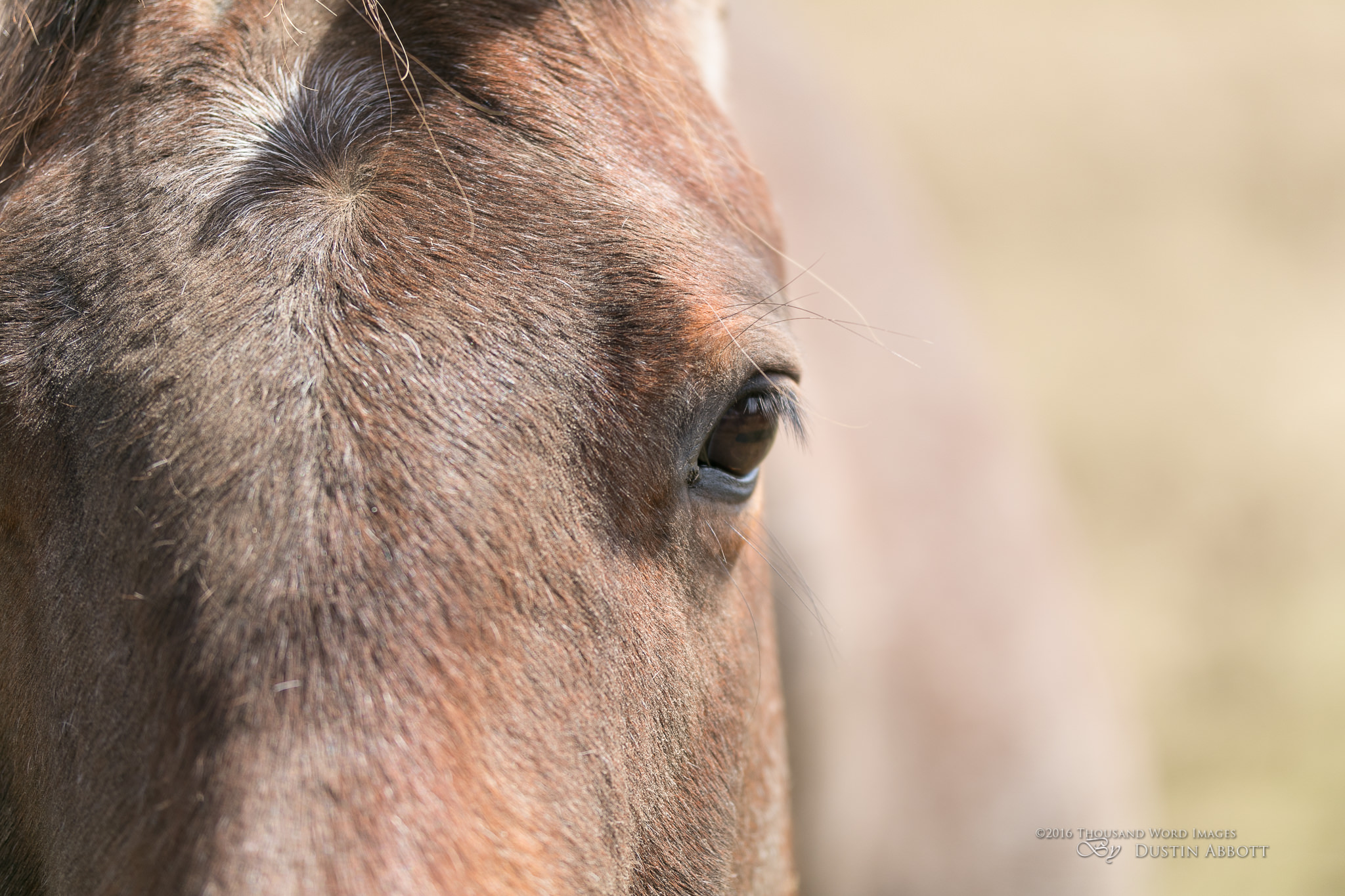

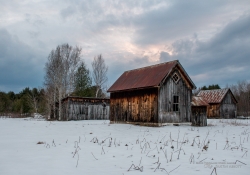



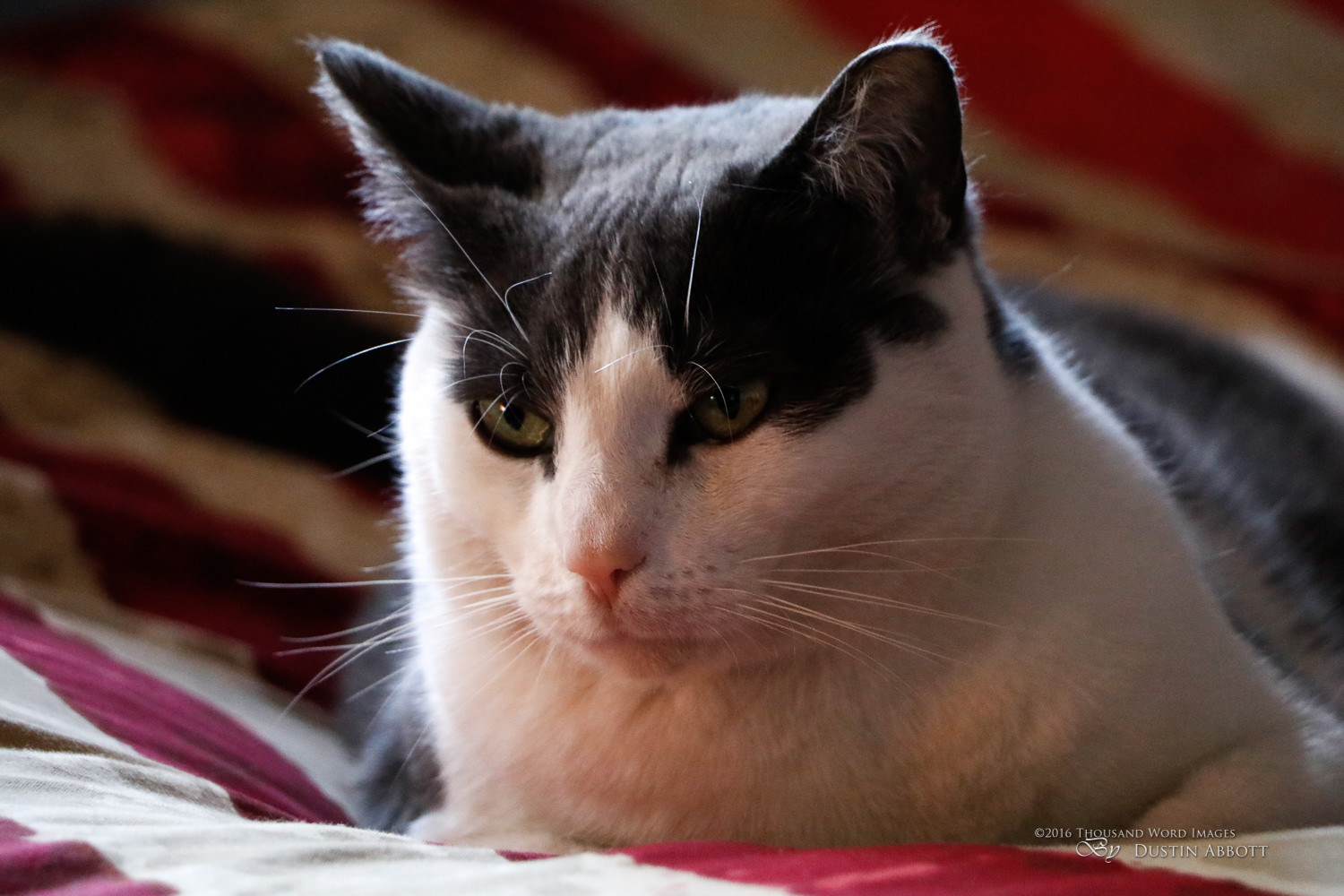
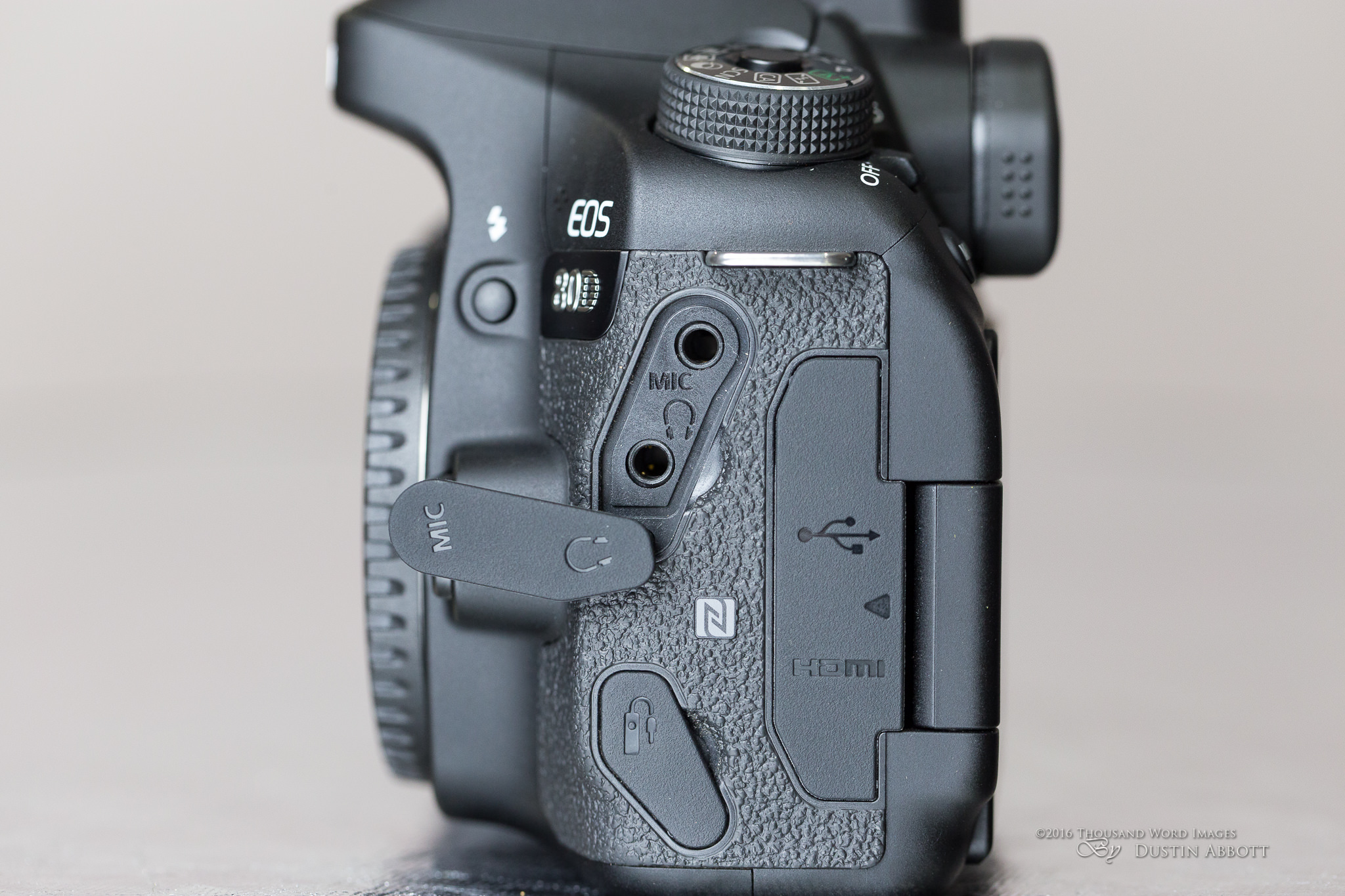




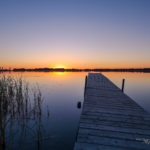

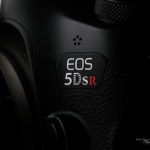

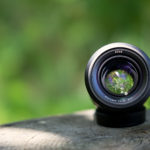
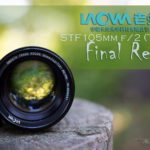
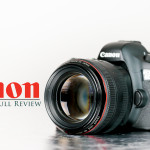
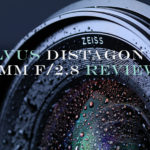
Nice review Dustin. I have also been pleasantly surprised with the performance of the 80D. I have found it tracks medium and larger birds better than the 7dm2. The image quality is also noticeably better. Even though the speed and buffer is a drag I find myself grabbing it more than the 7dm2 when I am shooting raptors. You might like this Osprey shot from when I was testing out tracking. I found tracking sensitivity turned to -1 and color recognition turned off allows the af to track really well… https://flic.kr/p/GFguaU
Kristofer – that’s a great shot! Thanks for the tips on the tracking. I’m not much of a birder, so this is very helpful.
Thanks for the kind words Dustin. I know the 80D received some flack for not having pre-set “cases” All the settings are there, so by turning tracking sensitivity to -1 it is essentially set up like case 2 on the 7D Mark II. Through lots of trial and error I also found that iTR on the 7dm2 was horrible for tracking birds with similar colored backgrounds. I turned off color recognition as soon as I got the 80D because I assumed it probably uses the same algorithms as the iTR. So far I have not been disappointed. However it does struggle with small fast moving birds like swallows and martins, but it can still be done with some persistence..
Hi,
“exceptionally good dynamic range” ? Is it a Canon-only user’s point of view or did u have any occasion to compare the 80D abilities in that field to other brand’s models ?
Nice review in any case.
C.
Hi, while I personally compared it against other Canon models, a number of other reviewers have compared it to Sony and Nikon bodies and come to a similar conclusion.
Hello Dustin. New here; great blog! A question please: Tony Northup, a photographer on youtube too, states that full frame lenses actually perform less well than dedicated kit lenses on crop sensor cameras. So basically a L lens is wasted on a, say, 80D. What do you think? Canon EF-S lenses are unfortunatelly sparse and much lower quality. It’s too bad as the video autofocus of a 80D is soooo appealling. Now, may be that 1080p video does not require a L lense anyway, being just about a 1/6 a the width of the 80D sensor wide side? Thanks!
I may shoot an episode on that. While it is true that full frame lenses look best on full frame, I disagree that they are wasted on crop. Good glass is good glass…period. Frankly I’m always disappointed by the image quality of most crop sensor variable aperture zooms and tend to shoot mostly full frame lenses on my crop bodies anyway.
Thank you for your answer! Like you before, I am debating between a 80D or a6300. Lens selection is a minor factor for me as I don’t plan on spending thousands on glass (though I would enjoy!). I wish Canon had more APS-C fast prime lenses like Fujifilm does…
Talia – for me it came down to ergonomics. The short battery life and lack of touchscreen made the a6300 less useful to me…as does Sony’s (infamous) support.
Nice review. Still wondering if Canon wised up with AEB and allowed five shots like the Nikons, rather than the 3 shots they’ve had along all the time. It’s an issue for HDR photographers. Of course, we can always use Magic Lantern software’s vastly superior AEB, but I doubt they’ll have a version for the 80D for another year, maybe two.
Peter, you have a menu option to select 2, 3, 5, or 7 bracketed shots.
how about the built in time lapse function in the 80D. I hear that it doesn’t do slow shutter video timelapse- I want to avoid taking pictures and doing the timelapse in post-It would be awesome if I can make low light, slow shutter timelapse and get the camera to make the movie for me….can anyone confirm this?
thanks!